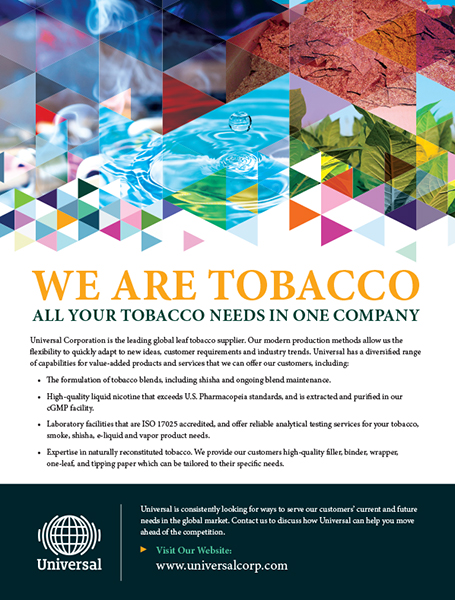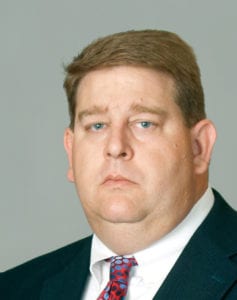
Indonesia commits to eliminating all forms of child labor by 2022.
By Stefanie Rossel
Child labor affected an estimated 152 million children globally in 2018. It’s also present in Indonesia, which in 2002 committed to eliminating all forms of child labor by 2022 to fulfill global development pledges. Over the past four decades, the island state has developed from one of the world’s poorest countries into a low-to-middle income nation with a poverty rate in the single digits. Progress has also been made in the elimination of child labor. According to the United Nations, the number of child workers declined from more than 4 million in 2009 to 2.9 million in 2018. Today, 7.4 percent of Indonesian children are working, mostly in agriculture. Perhaps unsurprisingly, considering the size of the tobacco sector in Indonesia, an estimated 60 percent of them labor in the tobacco sector.
In a recent report, the U.S. Department of Labor (DoL) attested Indonesia had made “moderate advancement” in 2019 in its efforts to eradicate the worst forms of child labor, which include commercial sexual exploitation and performing dangerous tasks in plantation agriculture. In addition to publishing a report with the most recent data on child labor, Indonesia’s government had increased its labor inspectorate funding from $10.2 million in 2018 to $16.7 million in 2019, with specific funds allocated to enforcing child labor regulations, according to the DoL. The country’s Ministry of Manpower, however, still lacked the financial and staff resources to fully enforce child labor laws throughout the country, the DoL study found, and there was no information available on the number of investigations conducted, violations found, prosecutions initiated and convictions secured.
Although Indonesia has ratified the key international conventions concerning child labor, 3.7 percent of the country’s 10-year-olds to 14-year-olds are working, the DoL report said. The majority (61.6 percent) work in agriculture where they fulfill tasks such as harvesting kernels for palm oil or applying fertilizer to tobacco. Many of them work long hours in extreme heat, a condition also considered hazardous for children. The minimum age for work in Indonesia is 15 years and that for hazardous work is 18.
Several institutions have been established to enforce child labor laws. The Ministry of Manpower, for example, provides legal information to employers and works with law enforcement officials to investigate and address instances of child labor. The Ministry of Women Empowerment and Child Protection coordinates the provision of social services to children, including those involved in child labor. Labor inspectors are regularly trained; they are authorized to conduct unannounced inspections and assess penalties. To coordinate its efforts down to the local level, the government has established regional action committees and task forces at provincial and district levels. A National Plan of Action (NPA) provides a framework for the elimination of child labor, whereas a roadmap toward a child labor-free Indonesia in 2022 supports implementation of the NPA for the elimination of the worst forms of child labor. Social programs provide block grants for schools and cash transfer programs.
Difficult mission

Despite increased efforts, eradicating child labor within the next two years will be a tall order, in part due to the country’s demographic and geographical particularities. With 267 million people, Indonesia is the world’s fourth most populous country. Its 17,508 islands make it the largest archipelago in the world. Half of the population lives in Java. Agriculture employs roughly one-third of the workforce.
The country is also the world’s second-largest cigarette market, after China, and ranks fifth among global top tobacco producers. Six million Indonesians are involved in the tobacco industry. Smoking prevalence is high, standing at 29 percent among people aged 15 and older. Indonesia also struggles with significant child smoking. In 2018, the Health Ministry reported 0.7 percent of children between the ages of 10 and 14 were smokers.
“There are many challenges, the most recent one being the Covid-19 pandemic. We are supporting the government in the implementation of child labor-free policies, and maintaining this positive relationship with the government is always a priority for us,” says Karima Jambulatova, executive director of the Eliminating Child Labor in Tobacco-Growing (ECLT) Foundation, which is present in the country as a founding member of the Partnership for Action Against Child Labor (PAACLA) and its Kesempatan project.
The latter project was initiated in 2019 in five districts in East Java Province and West Nusa Tenggara Province—Indonesia’s largest tobacco planting areas—to reduce the prevalence of child labor in the agriculture sector. At the subnational level, the program advocates child-friendly villages through engagement with local institutions, information dissemination for members of the village community, including farmers and farm workers, and activities for children. The PAACLA partnership works toward eliminating all forms of child labor by 2025 in line with the UN Sustainable Development Goals and is coordinated by the government. According to the ECLT, this cross-sector initiative promotes shared accountability and strong commitments necessary to mitigate the risk of child labor and promote sustainable change.

To support the government’s efforts, ECLT closely cooperates with various stakeholders and helps by providing models and best practices. “Our project in Indonesia focuses on prevention of child labor, on protecting children’s needs and rights and on increased commitment in the villages,” says Stephanie Garde, ECLT’s program manager. “The child-friendly village approach modeled from the namesake government program and implemented by the project includes activity centers where children get support doing their homework or do sports and other educational activities instead of hanging around the fields.”
Child labor in Indonesia usually occurs in informal settings, whereas laws and conventions are better placed to cover formal employment, Jambulatova explains. “The problem with child labor on smallholder farms, where income-generating crops like tobacco are grown alongside food crops, is that the whole family often goes to work to meet their needs,” she says. “Obviously, there is no employment contract between children and their parents. ECLT’s programs are designed to not simply remove children from child labor in one supply chain but to adopt a more systemic response focusing on cross-sector collaboration and multistakeholder engagement, which support government efforts to make sure no child is left behind.”
When talking about child labor, it is necessary to understand its nature. “The causes of child labor are far-reaching and complex, including poverty and lack of access to quality education and infrastructure,” says Jambulatova. “As with anything that affects the way people live, these issues become part of cultural practices as well, meaning that encouraging change also requires investment in awareness-raising to shift mindsets. To bring long-lasting change for children and their families, we need to understand the root causes of child labor and how they relate to each other in a wider system.”
A question of awareness
Eradicating child lavor is made more challenging due to farmers’ heavy dependence on the tobacco. There is less government support available to diversify their incomes with complementary crops than in other countries. What’s more, most farmers in Indonesia also don’t own the land they cultivate. During the harvesting season, it is common that neighbors come with their children and help.
Elimination of child labor is further complicated by the structure of the Indonesian tobacco market. While leading multinational manufacturers and leaf merchants are members of the ECLT and PAACLA and have committed themselves to keep their farms free of child labor, some of the domestic companies still have work to do. Moreover, a large number of “free” tobacco farmers sell their tobacco to traders and middlemen, which makes tracing within supply chains more difficult. Many small-scale farmers prefer selling their tobacco to these middlemen as they can sometimes offer higher prices than those fixed at the beginning of a season through contract farming.
ECLT member companies represent only approximately 35 percent of the tobacco sector in Indonesia. There is, however, progress among domestic manufacturers. “Some national companies are moving to vertical integration, with suppliers to these companies also opening up to this,” says Jambulatova. “PAACLA presents a unique opportunity for national companies to form a part of a partnership for the elimination of child labor specifically in Indonesia to step up to the challenge and close the gaps for sustainable change.”
As in many countries, tobacco in Indonesia is grown only during a short period of the year. During the remaining months, the farmers cultivate other crops, such as rice. “This is why we can’t limit our support to farmers to the tobacco supply chain only,” says Jambulatova. “It’s not a supply chain issue but an agricultural issue. Until there are collaboration and investment to address root causes and fight child labor across crops, we risk simply pushing children out of tobacco fields and into another crop down the road or during another season.
“The fact that this is a global issue across regions and industries shows that no one actor can solve this alone. Our long-term strategic vision is to engage across crops and levels building commitments and coordination that support economic growth for thriving farming communities free of child labor. We invite the government, companies and other industries to renew and deepen commitments so that we can reach this necessary goal as fast as the UN Sustainable Development Goals demand.”


















































